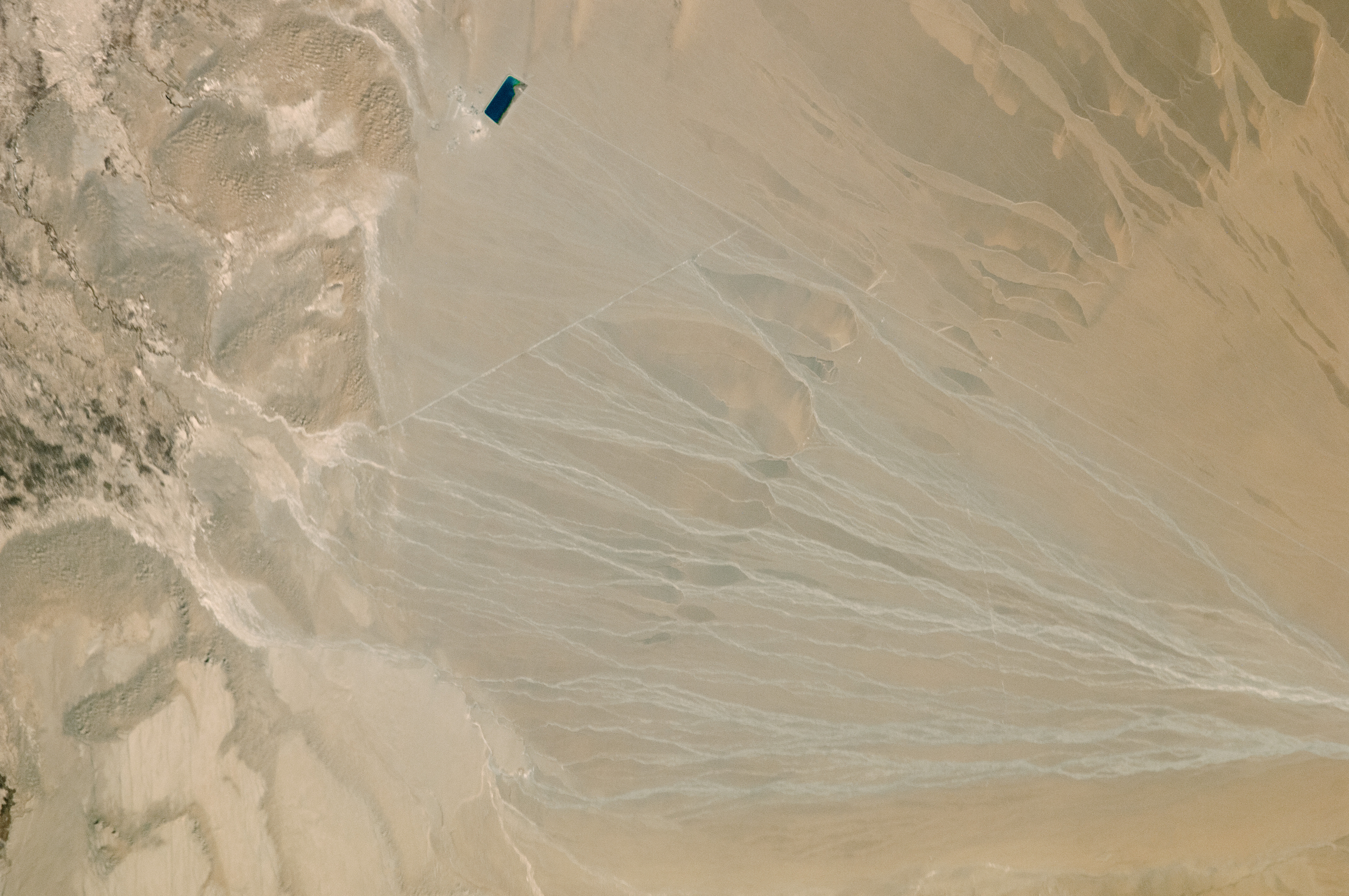[:ja]国際宇宙ステーションISSの宇宙飛行士が撮影した中国のタクラマカン砂漠の扇状地です。

扇状地(せんじょうち)とは、山地を流れる河川が運搬した砂礫が、谷口を頂点として扇状に堆積した地形で、河川が山地から平野や盆地に移る所などにみられます。タクラマカン砂漠は、中央アジアのタリム盆地の大部分を占める砂漠で、ウイグル語の「タッキリ(死)」「マカン(無限)」の合成語と言われ、「死の世界」「永遠に生命が存在し得ない場所」といったニュアンスとされます。実際、北に天山山脈、南に崑崙山脈と6000~7000m級の大山脈に囲まれているため、降水量は年に数ミリ程度で非常に乾燥していますが、この画像のように、長い期間で見れば、扇状地が形成されます。
地上の様子はこちらです。

参考文献: Alluvial Fan, Taklimakan Desert (NASA Earth Observatory)
地球俯瞰画像を見る: LiVEARTH
[Earthview Wonders] No.690: Alluvial Fan, Taklamakan Desert, China🇨🇳
Astronauts on board the International Space Station ISS captured the alluvial fan of Taklimakan Desert, China.

An alluvial fan is a fan- or cone-shaped deposit of sediment crossed and built up by streams. Fans are typically found where a canyon draining from mountainous terrain emerges out onto a flatter plain, and especially along fault-bounded mountain fronts. The water flows into the desert from the snow-covered Kunlun Mountains to the south. The modern fan is 65km long, and its channels end in fields of dunes (For scale, the reservoir in the image is about 2km long).
The local scenery on the ground is as follows.

Reference: Alluvial Fan, Taklimakan Desert (NASA Earth Observatory)
See earthview photo gallery: LiVEARTH[:en][Earthview Wonders] No.690: Alluvial Fan, Taklamakan Desert, China🇨🇳
Astronauts on board the International Space Station ISS captured the alluvial fan of Taklimakan Desert, China.

An alluvial fan is a fan- or cone-shaped deposit of sediment crossed and built up by streams. Fans are typically found where a canyon draining from mountainous terrain emerges out onto a flatter plain, and especially along fault-bounded mountain fronts. The water flows into the desert from the snow-covered Kunlun Mountains to the south. The modern fan is 65km long, and its channels end in fields of dunes (For scale, the reservoir in the image is about 2km long).
The local scenery on the ground is as follows.

Reference: Alluvial Fan, Taklimakan Desert (NASA Earth Observatory)
See earthview photo gallery: LiVEARTH[:]